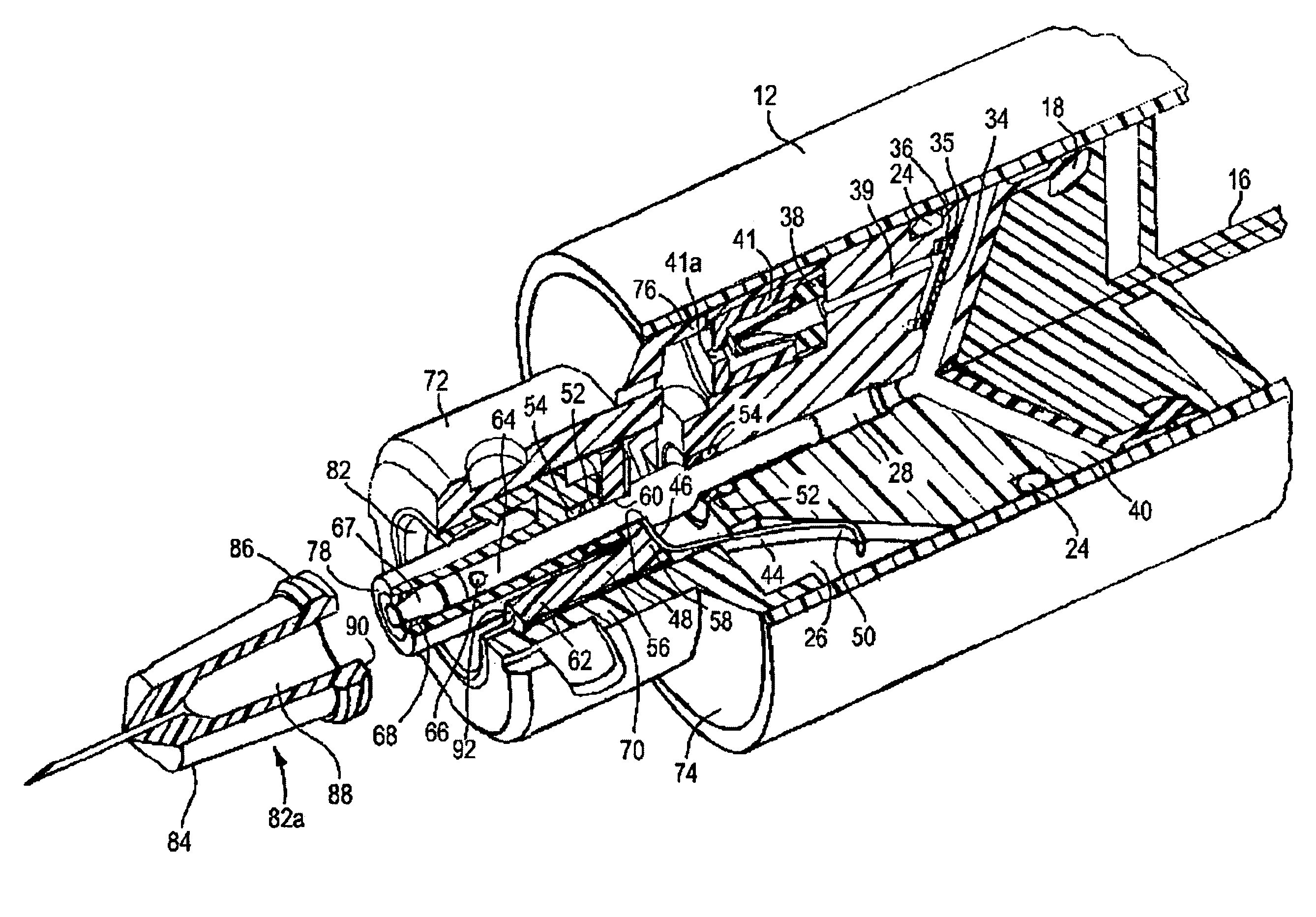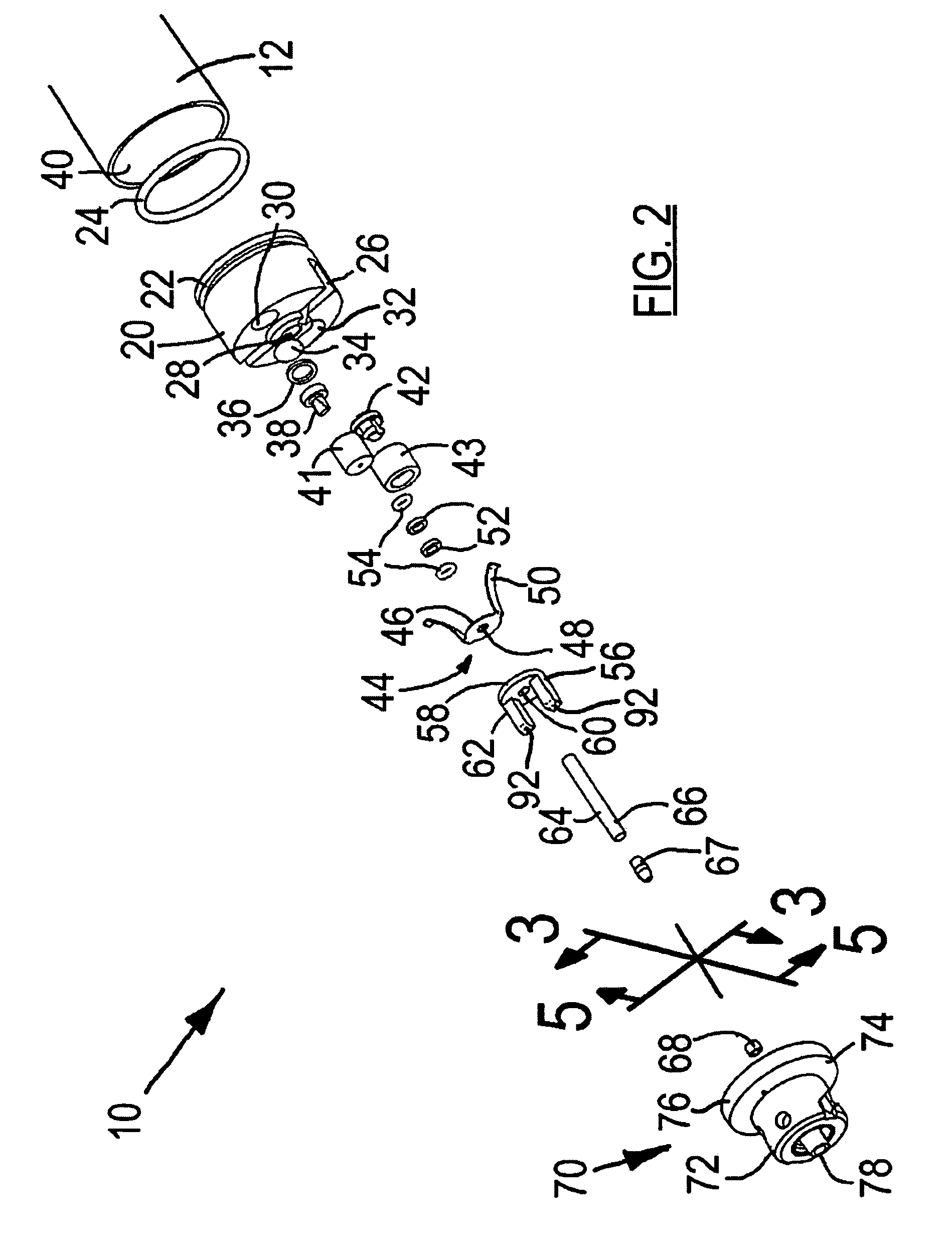Multi-outlet medical dispensing device
a medical and multi-outlet technology, applied in the direction of intravenous devices, suction devices, infusion syringes, etc., can solve the problems of significant risks, risk to both health professionals and patients, and the possibility of fatality of air or gas injection to patients
- Summary
- Abstract
- Description
- Claims
- Application Information
AI Technical Summary
Benefits of technology
Problems solved by technology
Method used
Image
Examples
Embodiment Construction
[0023]FIG. 1 shows generally, in exploded view, the medical dispensing device of the preferred embodiment of the present invention. Syringe 10 has an elongate, cylindrical, hollow body 12 having outwardly extending flanges 14 at one end as finger grips. Plunger 16 has an elastomeric head 18 attached at one end of plunger 16. Elastomeric head 18 provides sliding and sealing engagement with the inner surface of body 12. A cylindrical housing 20 having a circumferential groove 22 for placement of O-ring 24 for watertight sealing is placed in the front end of body 12. Housing 20 has inwardly and upwardly extending slots 26, a central bore 28 (as seen in FIG. 2), and bores 30 and 32 adjacent to central bore 28.
[0024]A hydrophobic membrane 34 is located in a slot 35 (see FIG. 3) on the side of housing 20 facing cavity 40 and is associated with washer 36 and a duckbill valve 38 to provide one-way flow of gaseous material from the cavity 40 of body 12, by way of a passageway 39, through duc...
PUM
 Login to View More
Login to View More Abstract
Description
Claims
Application Information
 Login to View More
Login to View More - R&D
- Intellectual Property
- Life Sciences
- Materials
- Tech Scout
- Unparalleled Data Quality
- Higher Quality Content
- 60% Fewer Hallucinations
Browse by: Latest US Patents, China's latest patents, Technical Efficacy Thesaurus, Application Domain, Technology Topic, Popular Technical Reports.
© 2025 PatSnap. All rights reserved.Legal|Privacy policy|Modern Slavery Act Transparency Statement|Sitemap|About US| Contact US: help@patsnap.com



